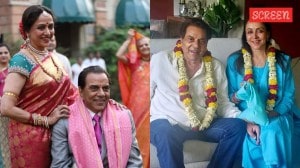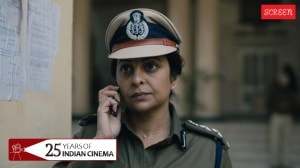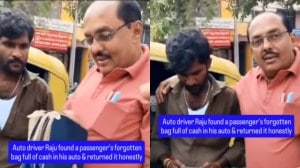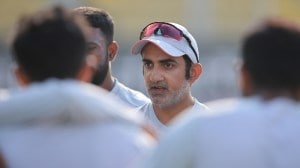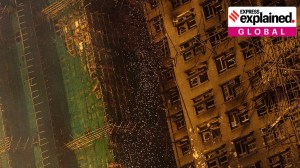In fact: Of tradition and reciprocal visits between India and Nepal
Oli, who is now visiting New Delhi, has invitations from both the prime ministers of India and China.
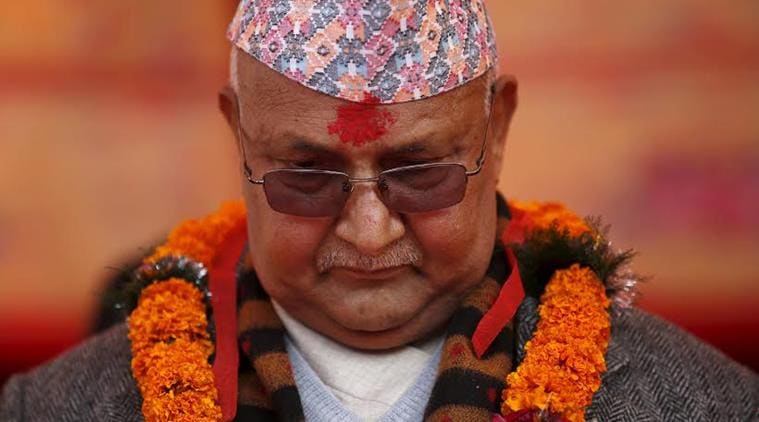 Nepal’s Prime Minister Khadga Prasad Sharma Oli. (Source: Reuters)
Nepal’s Prime Minister Khadga Prasad Sharma Oli. (Source: Reuters)
The Nepal government announced on Saturday that Prime Minister K P Oli would undertake a five-day official trip to Delhi beginning February 19. That puts an end to intense speculation about where Oli — as someone who has been critical of India’s objections to the new Constitution of Nepal, and subsequent border blockade — would head for his first official trip. Would it be Delhi or Beijing? So Delhi it is.
Right from the fifties, India and Nepal have broadly stuck to the principle of reciprocity in the visits of head of states and heads of governments. But Nepal has another balancing act to do. Prithvi Narayan Shah, the first king of unified Nepal, is said to have described the country’s position as “a yam between two boulders” — India to the south and China to the north. Nepal has largely stuck to Shah’s doctrine in its foreign policy approach, that is, a policy of equal distance between the two neighbours. So its leaders make a point to visit north soon after a visit to Delhi, with some notable exceptions in the order of visit.
Oli, who is now visiting New Delhi, has invitations from both the prime ministers of India and China. The Chinese ambassador is believed to have asked Kathmandu to indicate a ‘suitable date’ for Oli’s visit to pave the way for a reciprocal visit from China.
[related-post]
Oli had on January 26 told some senior editors in Kathmandu that he would not want to visit New Delhi in the “prevailing conditions”. Which means, not until the resumption of normal supply from the Raxaul-Birgunj checkpost on the border, which accounts for 70 per cent of supply from India to Nepal.
The visits to India by Nepal Army Chief Rajendra Chhetri (February 1-6) and Finance Minister Bishnu Poudel (Feb 7-9) helped in dispelling the prevailing confusion and helping finalise Oli’s visit to India. The blockade was lifted five months after it began, after army chief Chhetri asserted during his India visit that the current misunderstanding may take the shape of a humanitarian crisis in Nepal and, if that happened, it would be at the cost of India’s image.
High-placed sources said that, left to him, Oli was not keen on breaking the normal order of visit — India first, followed by China —but he couldn’t be seen as acting against Nepal’s interest.
Though both countries have failed to stick to the tradition of reciprocal, bilateral visits, New Delhi has stood Kathmandu up on more occasions than the latter has. The practice of reciprocal visits between the two countries at appropriate levels began with Jawaharlal Nehru and King Mahendra, a practice that was religiously stuck to until the 1990s. I K Gujaral’s visit in 1997 was the last by an Indian prime minister for a long time. Between Nehru and Gujaral, the only Indian PM to not visit Nepal was Charan Singh, the caretaker PM during the second half of 1979.
In 2002, Nepal’s last monarch Gyanendra Shah paid an official visit to India, followed by one to China. But after that, neither the president nor the prime minister of India paid a return visit. Atal Behari Vajpayee was in Kathmandu in 2002 for the SAARC Summit but that is not considered a bilateral visit. Manmohan Singh competed two terms as PM and presidents Pratibha Patil and K R Narayanan completed their tenures without any trip to Nepal. APJ Abdul Kalam came to Nepal only after his term as president. President Pranab Mukherjee has also not visited Nepal yet, though Kathmandu has extended an invitation. Nepal’s first president, Ram Baran Yadav, paid an official trip to New Delhi in 2009, with no reciprocity from India.
It was Narendra Modi who repaired the chain 17 years later, choosing Nepal as his second destination for an official visit, soon after his Bhutan visit less than 100 days after he took over.
Nepal, meanwhile, has been through a very unstable political phase during the last 24 years of multiparty democracy, with as many governments in those years. But all the prime ministers between 1990 and 2015 have visited Delhi, except two who weren’t extended an official invitation �� Jhalnath Khanal and Sushil Koirala. Khanal is leader of the Communist Party of Nepal-Unified Marxist Leninist (CPN-UML) — the same party as Oli’s — and was PM between February and August 2011. Sushil Koirala, whom Oli succeeded, only got verbal invites from New Delhi.
Another Nepal PM, chief of the Communist Party of Nepal Pushpa Kamal Dahal ‘Prachanda’, did visit India on invitation, but not before he had snubbed New Delhi by undertaking a trip to China in August 2008, a day after he took over as PM. On his return, Prachanda declared that his “first political visit” would be to India and he did undertake a visit a month later. Though he never specified how a “political visit” was different from an “official visit”, Prachanda’s relations with India began souring soon after.
Now, with Oli preparing for his visit, the Unified Communist Party of Nepal (Maoist), the high-level political machinery of the ruling coalition of which Prachanda is chairman, has asked Oli not to compromise on “national interest”, a vague instruction that’s seen as a message to “take a stand if necessary”.
This time around, with India’s popularity in Nepal taking a hit, political parties are divided on whether visits should be in line with tradition or if they should be done keeping in mind the benefits to Nepal.


- 01
- 02
- 03
- 04
- 05














